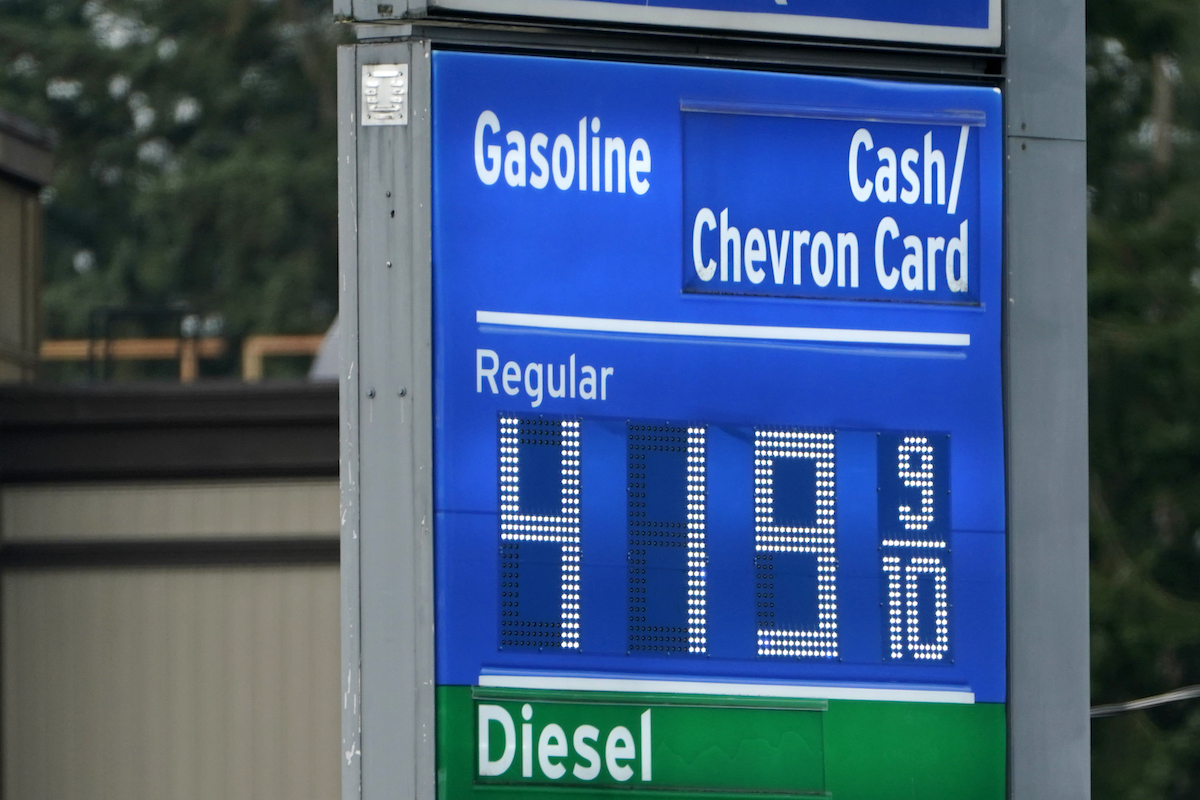Generally, the topic of inflation is considered dry and uninteresting, but it is one that has garnered much attention and debate over the past year. There are competing narratives as to what inflation is and why it matters, and even whether the U.S. economy is experiencing inflation or not. Inflation is a topic we should take seriously because it can destroy savings, investment, and entrepreneurship.
The great economic thinker Frédéric Bastiat (1801–1850) pointed out that the difference between a good economist and a bad one is the distinction between the seen and unseen effects of any action or policy measure. We cannot simply look at the immediate results of our actions; we must look at the potential unseen effects of what we do today that will emerge in the future. He wrote: “In the department of economy, an act, a habit, an institution, a law, gives birth not only to an effect, but to a series of effects. Of these effects, the first only is immediate; it manifests itself simultaneously with its cause—it is seen. The others unfold in succession—they are not seen: it is well for us, if they are foreseen.”
Inflation, much like rent control, Prohibition, and minimum wage laws create innumerable disastrous unintended consequences that are the unseen effects Bastiat warned about. Rent control leads to poor maintenance of housing units and hidden fees; Prohibition created black markets and mafia enforcement of alcohol sales; and minimum wage laws create harm for the least-skilled in the labor force. Inflation is the most pernicious in its unintended consequences because it is related to the expansion of the money supply, and as such its malicious effects are not relegated to one industry or sector but rather ravage the entire economy and every person in it.
Inflation occurs when there are persistent increases in in the general level of prices. This means that prices across all consumer goods and services are increasing rather than some prices of specific goods. For example, you may have noticed the shortage of live Christmas trees this year. They are less abundant in nurseries and stores, and their prices have increased. The Christmas tree shortage cannot fully be explained by the inflationary pressures we are seeing in the economy today. Christmas trees take 10 years to come to maturity, and the shortage we are seeing today traces back to the Great Recession, when fewer trees were planted—that historic demand change lead to supply issues today. When price increases are confined to one good or sector of an economy, the culprit isn’t inflation. That said, the inflation we are seeing today is exacerbating the increase in Christmas tree prices—it’s a double whammy of supply issues and inflation.
Inflation is so destructive because it affects every sphere of economic activity and every person in the market. Milton Friedman rightly said: “Inflation is always and everywhere a monetary phenomenon in the sense that it is and can be produced only by a more rapid increase in the quantity of money than in output.” Money operates on supply and demand curves like everything else. This means that we cannot simply increase the quantity of money without recognizing that the supply must be reconciled with the demand. If that reconciliation does not occur, then an excessive increase in the money supply will necessarily reduce the purchasing power of money. Inflation means that your dollars have less value because goods and services cost more.
If our theory of inflation is true, then why would central banks allow the increase of the money supply in the first place? The Federal Reserve has been pursuing a policy of quantitative easing, which targets interest rates through asset purchases. Between June 2020 and October 2021, the Fed bought $80 billion of Treasury securities and $40 billion of agency mortgage-backed securities each month with the goal of providing monetary stimulus and lower long-term interest rates. The Fed can also purchase things like government or corporate bonds or stocks. This allows the Fed to increase the money supply through the purchases, which increases the money that is circulating, and this is precisely what we have witnessed over the past several years. Additionally, the Fed has engaged in unorthodox policies during the pandemic that include direct loans to nonfinancial businesses and state and local governments—this has blurred the line between fiscal and monetary policy. The Fed is charged with monetary policy, and these actions broaden its scope of possible activities, and also creates distortions in the market. In 2020, M2 increased by $4 trillion, or 26%, the largest one-year increase since 1943. M2 is a component of the money supply that includes M1 (physical currency and coins, demand deposits, travelers checks, and other checkable deposits) plus savings deposits (including money market deposit accounts), small time deposits under $100,000, and shares in retail money market mutual funds. The increase in M2 has been fueled by the pandemic and is yielding an increase in the general level of consumer prices—it’s creating inflation.
Increasing M2 over the past two years has generated these unintended consequences and harmed those at the bottom of the income distribution the most. When money loses its purchasing power, your wages and income have less value, and this makes it more difficult to provide for your family. Prices rise as a result. The latest inflation reportreleased by the Bureau of Labor Statistics shows the Consumer Price Index (CPI) rose 6.8% from the year before.
There are some dangerous competing narratives about whether we are even experiencing inflation or there is just more corporate greed leading to price increases. Remember, inflation is a persistent increase in the general level of prices, so if greed is the explanation for what we are seeing, it would have to be the case that every corporation across all sectors of the economy suddenly became greedier and effectively colluded with one another to raise prices. This is a highly unlikely story. Sen. Elizabeth Warren went so far as to call increased gas prices and the cost of your Thanksgiving dinner the result of corporate greed and price gouging. This, of course, is after many on the left were denying that inflation was even occurring, or calling it “transitory.” Their solution? Spend more, which can be accomplished, they tell us, with Biden’s Build Back Better plan, which suggests we should spend another $2.5 trillion. And we are also told that, magically, that $2.5 trillion will cost nothing!
It is reminiscent of the quote attributed to Aleksandr Solzhenitsyn: “We know they are lying. They know they are lying, They know that we know they are lying. We know that they know that we know they are lying. And still they continue to lie.”
There is no benefit to increasing the money supply today to get a “free lunch.” Inflation is one of the costs we can expect, along with significant market distortions and altered incentives to work and produce. Economics puts constraints on our utopias. Often the unintended consequences we bear from short-term policy initiatives are far worse than the problem at hand. Inflation is real and is the example we are now living.

